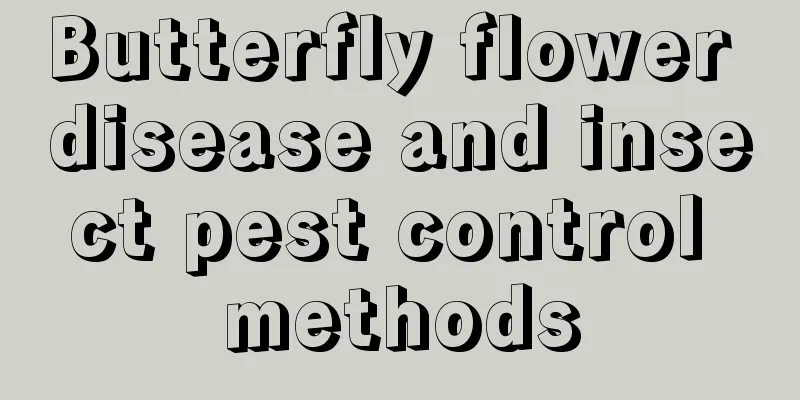Butterfly flower disease and insect pest control methods

Common diseasesBacterial soft rotsymptomIt is mainly caused by bacteria of the genus Eurippina, which leads to the rot of the tissues or organs of the butterfly flower, mainly harming the plant's organs, tubers, stem base, etc. The damage is serious during the outbreak period. Soft rot caused by bacteria usually produces indole due to the decomposition of protein glue by miscellaneous bacteria, which leads to a foul odor. Prevention and treatment methods1. Disinfection of seedlings 2. The cultivation pots and utensils must be disinfected. 3. The cultivation method should be appropriate. 4. Use medication for prevention. You can choose agricultural antibacterial drugs such as streptomycin, chloramphenicol, etc., and the concentration does not need to be very high. Leaf blightsymptomJuly to October every year is the peak period of butterfly flower leaf blight. The disease occurs more seriously on the leaves of the plant. The leaf blight will overwinter on the diseased leaves of the butterfly flower. When the temperature is suitable the following year, it will spread to the butterfly flower through wind and rain and infect it. Prevention and treatment methods1. In autumn, remove the diseased leaves thoroughly and concentrate them to prevent them from harming the butterfly flowers next year. 2. Strengthen the cultivation and management of butterfly flowers and control the occurrence of diseases. 3. In areas where the disease is more serious during the growing season, spraying can be carried out every ten days. Continuous spraying several times can effectively prevent and control the disease. Common pestsPestsOften caused by feeding by larvae of the armyworm, snails and slugs. Generally, it will harm the roots of butterfly flowers from June to August every year, and the undecomposed organic fertilizer will often induce the adult insects to lay eggs. Prevention and treatment methodsIt can be controlled by spraying 1000 times diluted 40% oxydemeton-methyl emulsifiable concentrate. Or use 3% lime water for spraying in the evening. |
<<: A complete guide to petunia pests and diseases
>>: How to prevent diseases and pests of potted lotus
Recommend
Why do the roots of sunflowers rot? (How to grow them so they don't rot or burst the pot)
Why do the roots of my own sunflowers rot? 1. Ove...
Anthurium leaves turn yellow and spotty, here's a trick to make them green immediately
Both new and old leaves turn yellow or black Fros...
Cultivation method of longevity begonia
Habits The first is moisture, it likes moist cond...
How to grow figs in pots to make them strong (how to grow figs in pots to make them bear more fruits)
Figs are grown in pots , which is now the choice ...
The correct way to care for camellia
The petals of camellia are layered, and although ...
Ginger flower planting methods and precautions
Ginger flower is a plant that likes to grow in mo...
6 key points of honeysuckle cuttings, when to cut
1. Cutting time Its cuttings do not have high req...
How often should I water the Hongyun Dangtou?
1. Time Watering does not need to be particularly...
How to prune roses in winter
1. Prepare tools Before pruning, prepare special ...
How to prepare soil for Phalaenopsis and what kind of soil is suitable for cultivation
1. Soil requirements Phalaenopsis is an epiphytic...
Dragon fruit tree planting technology
1. Cutting planting 1. Time: It is best to do it ...
What are the main varieties of lilac?
Syringa The plant height is about 3 to 7 meters. ...
How to care for Phalaenopsis before it blooms
1. Repotting and soil selection When you buy a Ph...
What to do if the spring miracle grows too long
one. Causes: 1. Insufficient light. This plant re...
Is it profitable to grow black fungus? How to make a profit?
Is growing black fungus profitable? Black fungus ...









